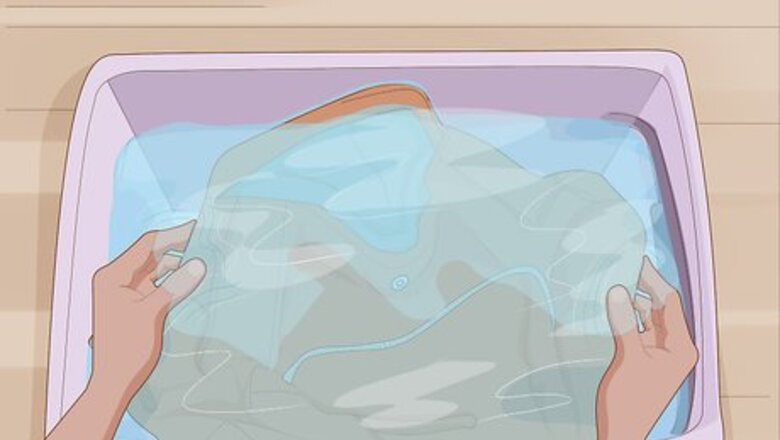
views
- Pour a capful of castile soap into a bowl of distilled water, then use the solution to dampen a lint-free cloth.
- Wipe the leather with the cloth to remove dirt, rubbing with the grain. Use a circular motion to work out tougher grime.
- Use a clean, damp rag to remove soap residue. Let the leather dry for a few hours, then dab a small amount of leather conditioner onto the item with a clean cloth.
Cleaning by Hand
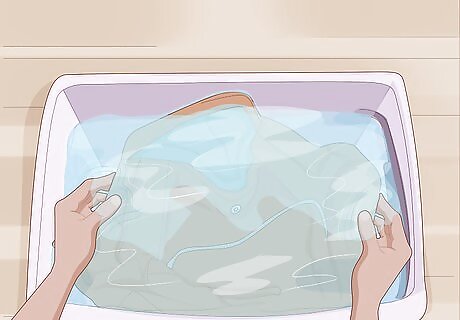
Hand wash leather for basic maintenance and deep cleaning. Hand cleaning is great for spot treating scuff marks and dirt, but it’s also an effective way of deep cleaning leather. Although if your item is expensive or made of hard leather, a professional cleaner might be the safest cleaning method.

Make a soapy water solution with castile soap. Pour a small amount of castile soap into a bowl of distilled water. Agitate the solution with your hand or a whisk to distribute the soap and create bubbles. For even better leather protection, use a soap specially formulated for cleaning leather. These kinds of soaps are available at many general retailers, hardware stores, and craft stores. If you don’t have castile soap or a specialty leather cleaner, you can use a mild soap, like dish soap, as a substitute. Always test your cleaning solution on an out of sight spot on the leather before using it to clean more visible parts.

Dip a soft, lint-free cloth in the cleaning solution. A normal dishcloth will do if you don’t have better options, but a microfiber cloth will work best. Avoid using any kind of abrasive material, like a scrubbing pad, as these may scratch leather, creating cloudiness in its finish. Generally speaking, harsh cleaners should be avoided when cleaning leather. These can cause a negative reaction the deforms the leather’s surface.

Wipe the leather with the cloth to remove dirtiness. Follow the grain of the leather with your cloth as you wipe. In areas where there is caked-on dirt or a tough-to-remove spot, rub using a light, circular motion to remove the debris. Avoid completely saturating the leather with water as you clean, which can damage the leather. You may want to allow the leather to dry a bit if it becomes too wet while cleaning.

Remove soap film and remaining dirtiness with a clean rag. You should be especially careful to remove all soap when you're done, as it can dry the leather out and cause it to crack. Take a fresh lint-free rag and dampen it with clean water. Wipe all cleaned leather surfaces thoroughly.
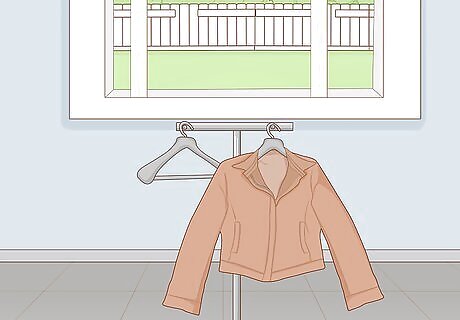
Let the item air dry. Arrange the item as it would rest normally on a hanger or suitable surface (like a chair or drying rack) until it air dries completely. Avoid exposing leather items to direct sunlight, as this can dry out the fabric and cause it to crack.

Treat the item with leather conditioner. This last step will restore the leather's smooth texture and keep it protected. Always follow the conditioner’s directions for the best results, but generally, buff conditioner into the fabric with a clean, dry, lint-free cloth. Over time, oil that keeps leather supple and resilient disappears from the fabric. Cleaning, especially, can leave leather brittle if you don’t replenish these oils with leather conditioner. When cleaning finished leather, avoid products such as mink oil and leather waxes. They can destroy the polish and appearance of finished leather products.
Using a Washing Machine

Pick an item that isn't too expensive. It's important that you know from the outset: there's no guarantee that machine-washing your item won't do damage to it. Durable items, like boots or jackets, might be the best candidates for machine-washing. Don't wash leather that is brightly colored, as color may fade in the washing machine. Avoid washing leather items that have delicate seams or lots of detailing, unless you're comfortable risking damage to these features. If an item is expensive and needs to be cleaned, like a fancy pair of boots or a nice suede jacket, use a spot cleaning method or a professional cleaning service.
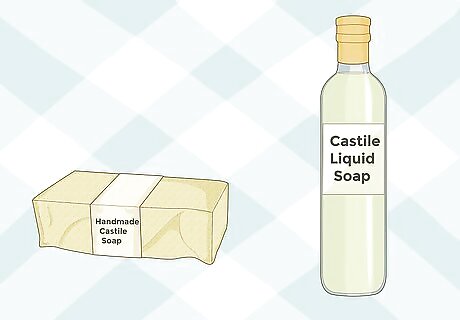
Buy or make castile soap. This gentle soap is relatively easy on leather, which can be damaged by soaps that are more abrasive. Any type of castile soap will do. If you can't find it at the store, you can make your own.

Pour ¼ cup (59 ml) of soap into the detergent dispenser. Castile soap is used in the same way you'd use regular laundry detergent. Add the soap to your laundry machine in the fashion your machine requires and turn the water setting to “Cold.”

Add the leather item and wash it with a gentle cycle. To prevent your leather item from taking too much of a beating during the wash cycle, you may want to throw in a few other black items to absorb some shock. Use the gentlest setting your washer has. Turn your leather item inside out, if possible, and then zip all zippers and fasten all fasteners. This process may help “flush” stains out while protecting the visible parts of the leather from damage.
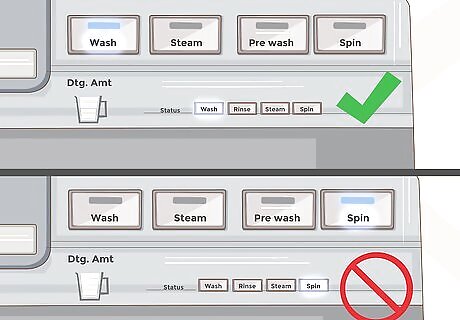
Run the wash cycle. Keep an eye on the leather item as it washes. You’ll want to snag it from the washing machine as soon as the cycle is finished, so it doesn't get a chance to dry in there. Leather that is dried crumpled, creased, or misshapen could cause it to permanently deform in these ways.

Restore the item's shape. Lay it out flat or hang it up. Smooth out the wrinkles and folds that formed in the wash. In some cases, you may be able to get some additional length out of the leather by pulling in it firmly to stretch it out while it’s still wet. Be careful when stretching the leather. There’s no guarantee it won’t rip, and if it does it won’t be easy or cheap to fix.

Let the item air dry. Avoid letting leather items dry directly in the sun. The sunlight can bake out important oils necessary to keep your leather supple. Hang the items to air dry out of the sun in a room. Open the windows to increase airflow and decrease dry times. Don't use a hair dryer or any type of directed heat on your leather item. If you use the dryer, make sure it's the "low" or "no-heat" setting.

Apply leather conditioner to the item. Leather conditioner will help restore the leather to its previous texture and protect it. Generally, conditioner is applied by being buffed into the leather with a paper towel or soft, lint-free cloth. After the conditioner is applied, the item is ready for use. If you don’t have a commercial leather conditioner, try substituting a light application of olive oil. Apply the olive oil as you would a conditioner – by lightly buffing it into the leather.
Washing Unfinished Leather Products

Identify unfinished leather. Items with unfinished leather will have a rough-looking surface. You’ll find leather like this most commonly on items that generally have some wear and tear, such as construction boots, horse saddles, and baseball gloves.
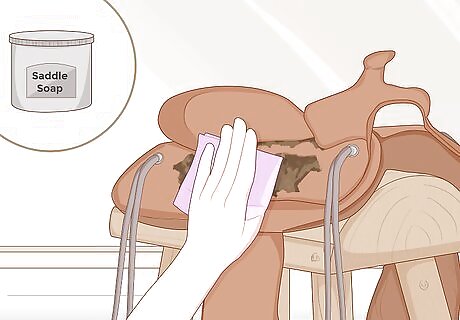
Remove dirt with saddle soap. Pour a quarter-sized amount of saddle soap onto a clean, damp cloth. After you’ve worked up a good lather of soap on the surface of the leather, flush it clean with water. As per usual, avoid oversaturating the leather with water. If you notice the leather becoming waterlogged, take a short break and let it air dry for a little while to prevent damage.

Use a soft bristle brush for severe dirtiness and crevices. Your cloth might not be enough to clear crevices or bust up severe dirtiness. Be sure to use a very soft bristle brush, like one made from nylon, to protect damage to the surface of the leather. To prevent accidentally damaging the leather, before using a brush, first test it out on an inconspicuous spot of the leather first.

Wipe away remaining lather. Dampen a clean, lint-free cloth in water. Wring out excess moisture then use this cloth to wipe away any remaining soap or dirtiness. Be thorough! Leftover soap will dry out and harm the surface of your leather.

Air dry the leather item overnight. Unfinished leather has a tendency to take on water a little more easily than finished leather. Because of this, you should give unfinished pieces at least eight hours to dry, or an overnight period.

Treat the leather. Pour a leather preservative, such as mink oil, onto the dried item. Using the remaining unused cloth, work a generous amount of oil onto the object, especially into any cracks and areas that look worn. The item is now ready to use.










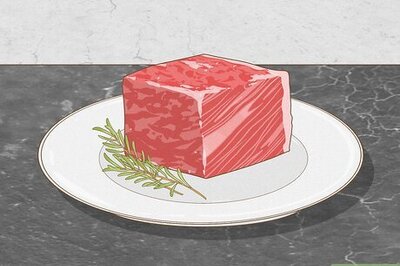








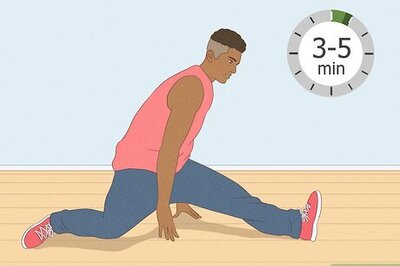
Comments
0 comment